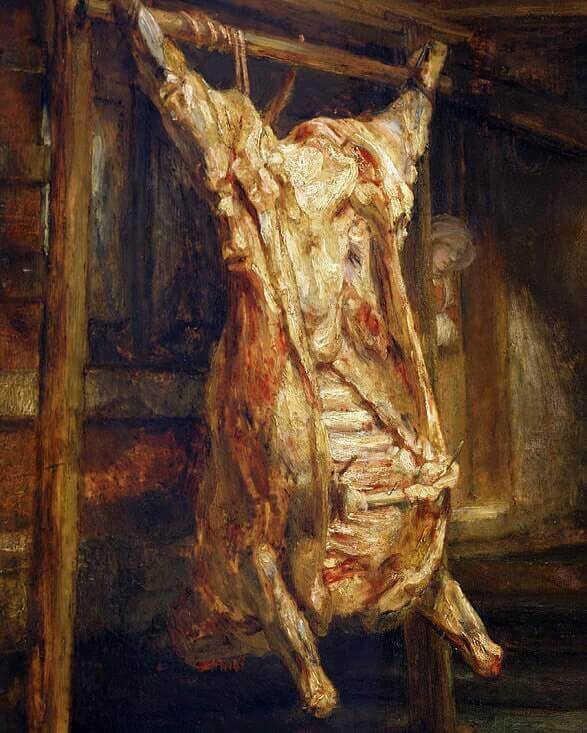Slaughtered Ox, 1655 by Rembrandt van Rijn

From his earliest years, Rembrandt clearly favored historical painting as a genre and produced works based on biblical, mythological, or literary stories, which may be compared with the Italian Renaissance tradition.
Although he was an excellent portrait painter, and portraits progressively became the most profitable part of his painterly activity, he preferred the "great" subjects. Paintings by him that may be included in the
development of the so-called genre painting popular with Flemish and Dutch collectors, therefore, are very rare. There are, however, about a dozen pure landscape paintings (generally not regarded as being among the artist's
most impressive masterpieces) by Rembrandt, together with a few works that can be linked to the development of the still life.
It is here that Rembrandt stands far apart from the new Dutch taste. At a time when people buying works of art wanted rich and elaborate compositions, he painted a dramatic picture, such as The Slaughtered Ox,
a metaphor for death.




















